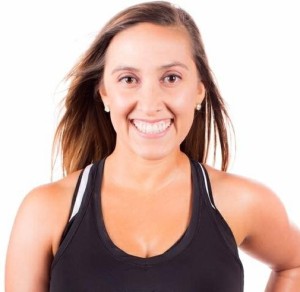Standing broad jump 3 attempts
Heaving snatch balance 1rm
Jackie, Ryan, Cailtin, and Mark push pressing to infinity. Seemed like it anyway.
Hefty Holidays! (that’s supposed to be “Happy” Holidays… right?)
by Jeff Edwards
Body composition, the amount of fat to lean body mass, is not an accurate measure for health and fitness. Let’s get that out of the way right off the bat. Sorted? Good. That being said, most people who exercise do so not only for improving their performance, but for improving aesthetics. Great! One of the best benefits of exercise is improved self confidence in addition to making you a beast among men or a babe among women. While we at ForgedFit focus largely on performance, I am aware that many people want to lose a little weight, especially during the holiday season as New Year resolution time rolls around. I’ve said it many times train like an athlete and you’ll start to look like an athlete, but how many of you realized nutrition is a big part of training for any real athlete? So today, I’m going to talk a bit about shedding the weight, because achieving goals is what it’s all about.
Everyone has gotten the lecture on nutrition. Without proper nutrition in adequate amounts, progress towards performance cannot be made, in fact if your nutrition is really bad you will lose performance. You can’t run a Formula 1 car on a cup of regular unleaded and expect to win any races, especially when the other drivers are using a full tank of high octane. Well, you’re body is a heck of a lot more complicated than any Formula 1 car. Remember Paleo? That’s your high octane fuel. Zone, that’s how you know your tank is full. Without the right type of fuel and just enough to get the job done, you’ll be lucky to finish the race at all. I could have used the analogy on Nascar, but I want athletes who can turn left AND right…
Nothing new so far, I know, but the point needs to be driven home again and again. Here’s the problem, most people don’t Zone and I can’t blame them. It’s annoying and difficult to look up every food you eat and find out how much equals one block, then measure out however many blocks you need for every meal. In addition to the annoyance, it’s hard to see the carryover into how doing all this extra work is going to help you lose the weight, other than the obvious benefit of all that extra work = increase in calories burned. This is where the nutrition journal comes in.
Remember that bit in your journals about keeping track not only of your workouts but your nutrition as well? One of the most effective strategies, not an opinion ask any dietician, for weight loss and performance enhancement is KEEPING TRACK OF EVERYTHING you eat. Why does this work? I’ll answer that question with a barrage of questions… How often do you snack? How much protein, carbohydrate, and fat do you eat in a day? How many calories does that add up to? How does that compare to your daily requirement based on your basal metabolic rate and your activity level in addition to your needs in training? Get the picture?
You can’t keep track of all that in your head, at least with ANY degree of accuracy. So what do you do? Write it down. Simply writing down what you eat at every meal will help you be more aware of what you’re actually eating, and make you more aware of snacking and the inevitable “I earned this extra glass of wine/blueberry muffin/piece of pie (mmmm pie)” that comes with training. In addition to increased awareness of what you actually eat, this journal will allow you to see exactly how close you are to reaching your goals, and how you need to adjust things to finally get there.
Writing everything down is a very important first step. What’s the next step? Make that journal work for you. Paying it 9 dollars an hour won’t get it to do your laundry, I tried. What it will do is allow you to transfer that information into FitDay. This is an online journal that keeps track of everything. Seriously awesome and incredibly useful, with this FREE tool you can enter what you ate in roughly what amount (much easier than it sounds, only takes a couple of minutes to fill out an entire day’s worth of meals), and in return it will show you how many calories you’re getting from carbs, protein, and fat, your total caloric intake in relationship to your basal metabolic rate and activity level, as well as calculating the additional calories burned from exercise and other “activities” (seriously, this journal will keep track of everything).
In addition to that useful information, it goes a step further. If you have a weight loss goal, it will show you how many calories per day under your activity level you should consume in order to reach your goal. Or, the reverse, how much extra activity you must put forth in order to burn the calories. It will show you graphs of progress, and even allow you to keep track of your mood (useful as a gauge for recovery/overtraining), and an additional journal for your eyes only where you can complain about how long winded, preachy, and irritatingly demanding that trainer guy at the gym is…
You work your asses off in the gym, and everyone is MUCH more fit now than before they started training. FitDay and your nutrition log is the silver bullet (or bullets just in case there’s a werewolf apocalypse instead of a zombie apocalypse, Crossfitters are prepared for anything and everything) to get you to that next level of fitness, or to that smaller pant size.

